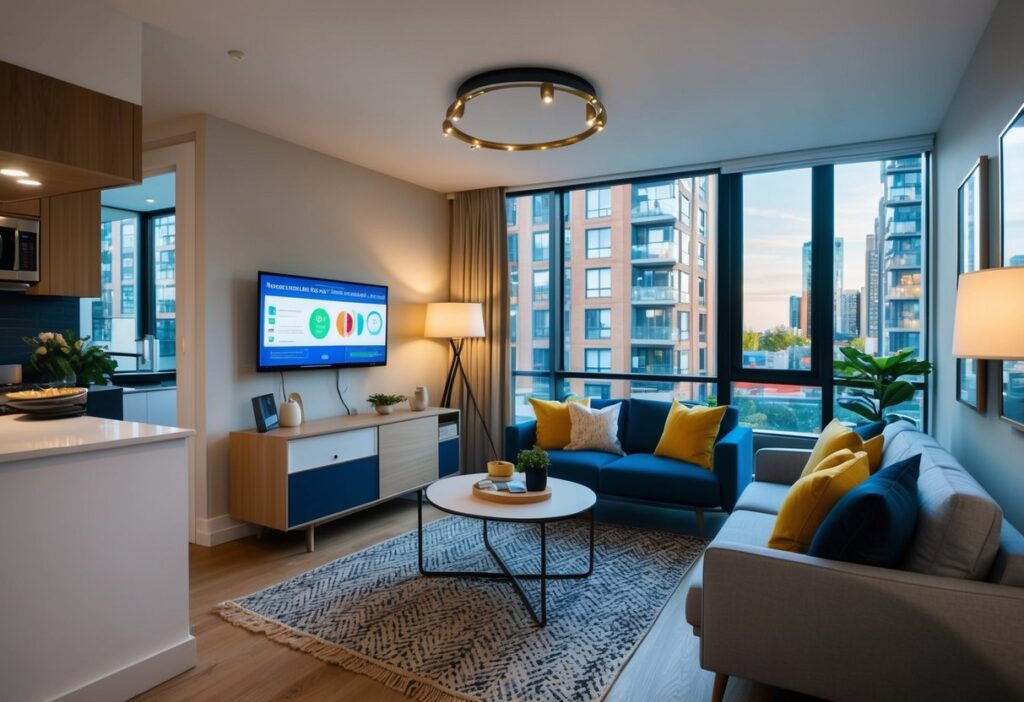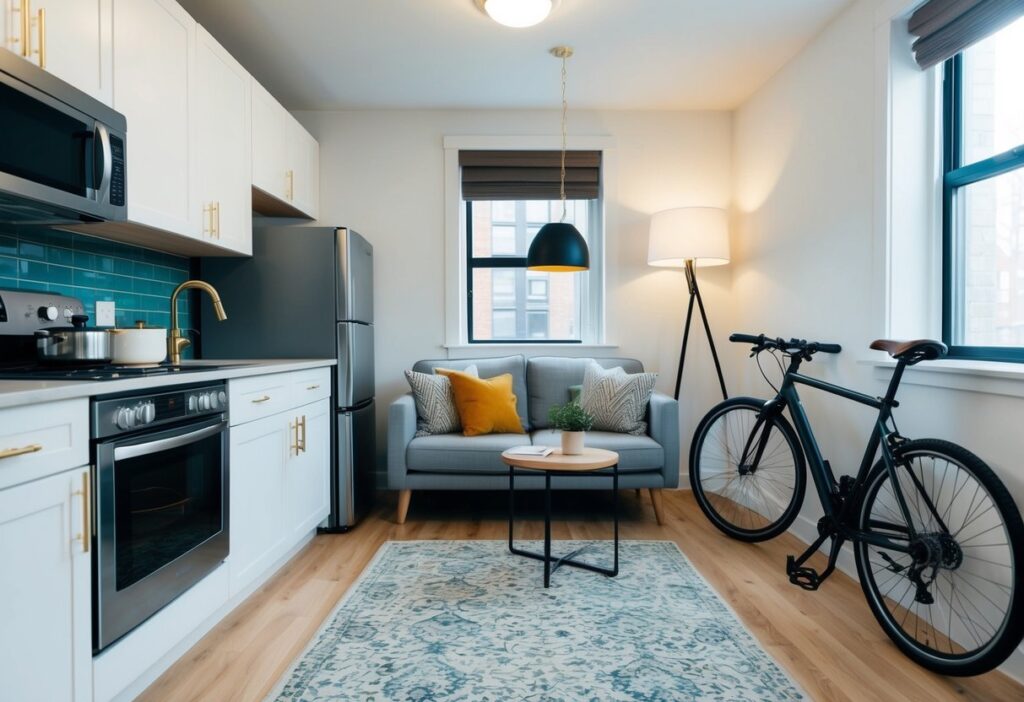Anúncios
Rent takes a big chunk of most people’s budgets. Finding ways to reduce this expense can free up money for other needs or savings goals.

Lowering your monthly rent is possible through various strategies that range from negotiation to changing your living situation. These seven methods offer practical approaches that can work for different circumstances and comfort levels.
The tips in this article don’t require extreme sacrifices. They’re realistic options that many people have used successfully to keep more money in their pockets while maintaining a comfortable place to live.
Understanding Rent Economics

Rental prices follow specific economic patterns influenced by market conditions and geographic factors. These forces shape what landlords charge and what renters can expect to pay in different areas.
Supply and Demand Factors
Rent prices rise when more people want housing than what’s available. This happens often in growing cities where jobs are plentiful but new housing construction lags behind.
During economic booms, more people can afford higher rents, pushing prices upward. Conversely, during downturns, landlords may lower rents to avoid vacancies.
Seasonal patterns also affect pricing. Many areas see rent increases during summer months when more people move, especially families with school-age children and college graduates.
Property investors track vacancy rates carefully. When rates drop below 5%, landlords gain pricing power and can raise rents more aggressively.
The Impact of Location on Rent
Location remains the most powerful factor in rent pricing. Urban centers typically command premium prices due to job proximity and amenities.
Neighborhoods with good schools, low crime rates, and convenient transportation options justify higher rents. A property just a few blocks from a subway station might cost 15-20% more than a similar unit farther away.
Neighborhood Rent Premium Factors:
- Access to public transportation: +10-15%
- Top-rated schools: +10-25%
- Walking distance to shopping/dining: +5-15%
- Parks and green spaces: +5-10%
Gentrifying areas often experience rapid rent increases as amenities improve and more affluent residents move in. These transformations can raise rents 30-50% over just 5-7 years.
Negotiation Strategies for Rent Reduction

Asking for lower rent requires preparation, good timing, and confident communication. The right approach can save you hundreds of dollars each month while maintaining a positive landlord relationship.
Effective Communication Techniques
When approaching your landlord about rent reduction, preparation is essential. Research local rental prices beforehand to make a data-backed case. This gives you concrete numbers to discuss rather than simply asking for a discount.
Begin the conversation with positive comments about the property before transitioning to your request. For example:
Sample script: “I’ve enjoyed living here for the past year. The location is perfect for me, and I appreciate how responsive you’ve been with maintenance. I’ve noticed similar units in the area are renting for about $150 less than what I’m paying. Would you consider reducing my rent to be more in line with the market?”
Always remain professional and calm. Focus on creating a win-win situation by emphasizing your reliability as a tenant.
Timing Your Lease Renewal
The best time to negotiate is 60-90 days before your lease expires. This gives your landlord enough time to consider your request while also creating some pressure to keep a good tenant.
Winter months (November-February) often offer better negotiating leverage since fewer people move during cold weather. Property owners typically want to avoid vacancies during these slower rental periods.
Approach your landlord after demonstrating your value as a tenant. A history of on-time payments and property care strengthens your position considerably.
Tip: If you notice vacant units in your building or neighborhood, this can be an excellent time to request a reduction as landlords prioritize keeping reliable tenants.
Leveraging Competing Offers
Finding comparable units with lower rents provides powerful negotiation leverage. Take photos or screenshots of similar apartments with better pricing to share with your landlord.
Be prepared to actually move if necessary. This isn’t a bluff—having genuine alternatives strengthens your position. Visit several places and obtain written offers when possible.
Present competing offers respectfully: “I’d prefer to stay here, but I’ve found similar units for $X less per month. Would you be willing to match this rate?”
Some landlords may counter with non-monetary benefits if they can’t lower the rent. Consider asking for:
- Free parking
- Waived pet fees
- Included utilities
- Free storage space
- Upgraded appliances
Cost-Saving Alternatives

Looking beyond negotiation tactics, several structural changes to your living situation can dramatically cut your monthly rent expenses. These alternatives might require some adjustment but can lead to significant financial relief.
Exploring Roommate Arrangements
Sharing your living space with roommates remains one of the most effective ways to reduce housing costs. A two-bedroom apartment typically costs 25-30% less per person than two separate one-bedroom units. When searching for potential roommates, consider:
- Friends or coworkers you already know and trust
- Online platforms like Roommates.com, RoomieMatch, or Facebook housing groups
- College bulletin boards if you live near a university
Create a clear roommate agreement that outlines responsibilities for rent, utilities, cleaning, and guests. This prevents future conflicts. Many landlords offer rent discounts for long-term tenants who find their own roommates, as this reduces turnover costs.
Considering Smaller Living Spaces
Downsizing your living space can substantially reduce your monthly expenses. Studio apartments cost about 20-30% less than one-bedroom units in most markets. Consider these options:
- Micro-apartments (300-400 square feet) with efficient designs
- Studio apartments without separate bedrooms
- Efficiency units with kitchenettes instead of full kitchens
These smaller spaces often come with lower utility bills too. Many renters find that downsizing forces them to declutter and adopt a more minimalist lifestyle. This brings additional savings by reducing impulse purchases for home décor and furnishings.
Relocating to More Affordable Areas
Moving to a different neighborhood or city can dramatically reduce housing costs. The same apartment might cost half as much just a few miles away from trendy districts. Consider these strategies:
- Research neighborhoods with upcoming development projects that haven’t yet seen price increases
- Look for areas with good public transportation but slightly longer commutes
- Consider suburbs or neighboring towns with 15-30% lower average rents
Use cost-of-living calculators to compare different locations. Some employers now offer remote work options, making relocation even more feasible. Many cities have “hidden gem” neighborhoods with lower rents but similar amenities to more expensive areas.
Additional Tips to Lower Rent Expenses

Beyond the main strategies, several other approaches can help reduce your monthly housing costs. These options range from lease term negotiations to specialized housing programs that many renters overlook.
Long-Term Leases for Lower Rates
Landlords value stability and predictable income. Committing to a longer lease term—such as 18 or 24 months instead of the standard 12—can give you leverage to negotiate a lower monthly rate.
Some property managers offer discounts of 5-10% for extended leases. Before signing, calculate the total savings over the lease period to ensure it’s worthwhile.
Example savings: A $1,500 monthly rent with a 7% discount for a two-year lease saves $1,260 per year or $2,520 total.
Ask about escalation clauses that might increase rent during a multi-year lease. Getting the discount rate locked in writing protects you from unexpected increases.
Subletting and Short-Term Rentals
Temporarily subletting your space when you’re away can offset rent costs significantly. Many lease agreements allow subletting with landlord approval.
Popular subletting options:
- Weekend rentals during local events
- Summer subletting in college towns
- Month-long rentals during travel periods
Before subletting, check your lease terms and local regulations. Some cities have restrictions on short-term rentals.
Platforms like Airbnb or Sublet.com can help you find qualified temporary tenants. Always screen potential subletters carefully and create a written agreement outlining responsibilities and payment terms.
Rent-Controlled and Subsidized Housing Options
Government programs exist to make housing more affordable for eligible individuals.
Rent-controlled apartments cap annual rent increases, providing long-term stability.
Common housing assistance programs:
- Section 8 Housing Choice Vouchers
- Low-Income Housing Tax Credit properties
- Public housing administered by local authorities
Income requirements vary by program and location.
The Department of Housing and Urban Development (HUD) website lists eligibility guidelines and application procedures.
Wait lists for these programs can be long, so apply early.
Some cities also offer inclusionary housing programs requiring developers to include affordable units in new buildings.